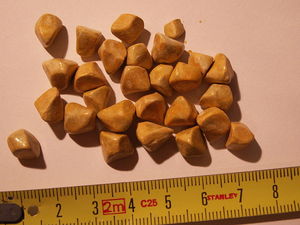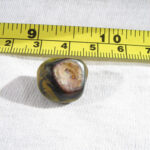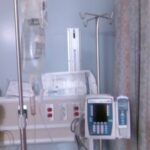Gallstones occur in the gallbladder. The gallbladder stores bile made by the liver, until the bile is needed to help the body process fats. NetDoctor says that gallstones are made of bile, cholesterol and calcium salts. Size can vary from a very tiny millimeter to several centimeters.
With no symptoms, gallstones can be silent and relatively harmless. They can also be a sudden, life-threatening emergency situation. Gallstones do not discriminate. All ages can get them, but are not common in the young. There is more chance of gall stones as people get older, according to Better Health Channel.
What Causes Gallstones and Who Gets Them?
Gallstones form when bile has too much cholesterol in it. The liver makes bile to help digest fats and stores that bile in the gallbladder until it is needed to help digest fats. Many different types of people can be likely to get gallstones. Some reasons why they get gallstones are due to lifestyle choices. Other reasons include diseases and disorders caused by genetics or other explanations.
People with high cholesterol and obesity are among most likely of gallstones. Both may occur due to dietary choices, level of activity. Genetics may also play a role in gallstones. Since both cholesterol and obesity issues are due to certain body fats, excesses can make it more difficult for the body to process fats and cholesterol in the bile, causing gallstones.
Other common causes can be from chronic intestinal conditions such as Crohn’s Disease, IBS (Irritable Bowel Syndrome), or Colitis. Gallbladder sludge and family history of gallstones can lead to gallstones.
Previous reports stated birth control pills containing oestrogen (a form of estrogen commonly used in contraceptives) increased gallbladder disease risk. However the FDA reported in 2008 that such hormone medications are not a significant risk any longer because estrogen ingredients have been lowered.
Who Needs Gallbladder Surgery?
If there are no symptoms, medical intervention may not be required. According to Better Health Channel, avoiding dairy and fatty foods, while switching to low fat foods, may help prevent or stop symptoms for some people.
However, each case is different. Medical professionals in the gastro-intestinal specialty may suggest a sound wave treatment to break-up the stones. It may also be determined that gallbladder removal is the best option to prevent future attacks or unnecessary life-threatening situations.
Gallstone blocked ducts can cause severe complications, including digestive system infections and inflammation of liver and pancreas. If symptoms are ignored, gallstone issues can cause death. A common symptom is upper stomach area pain that may radiate around to the upper right back, mimicking a heart attack. Only medical tests can prove what is causing such symptoms to help the medical team determine what is causing the gallstones and what needs to be done about them.
Disclaimer
This article is for informational purposes only. The publications is not intended to take the place of medical advice. Please seek advice from a qualified healthcare professional.
Sources
Gallbladder Disease, reviewed by consultant general surgeon, Robert Diggory (08/06/2003). Retrieved from http://www.netdoctor.co.uk/diseases/facts/gallbladderdisease.htm
Gallstones, published by Victoria State Government and reviewed/approved by Canberra Hospital Gastroenterology Unit (Sept. 2009). Retrieved from http://www.betterhealth.vic.gov.au/bhcv2/bhcarticles.nsf/pages/Gallstones
Ortho-Tri-Cyclen drug label insert, page 12, by Ortho-McNeil Pharmaceutical, published by U.S. Food and Drug Administration. http://www.fda.gov/ohrms/dockets/ac/05/briefing/2005-4152b1_01_05_Ortho%20tri-cyclen%20Label%20FDA%205-13-05.pdf
Orhto-Evra (birth control drug label information, page 20: Gallbladder Disease) by Ortho-McNeil Pharmaceutical, reviewed by U.S. Food and Drug Administration (revised January 2008. Retrieved from http://www.accessdata.fda.gove/drugsatfda_docs/label/2008/021180s026lbl.pdf
Reference:
- Top Reasons to Remove Gallbladder www.associatedcontent.com/article/5669552/top_reasons_to_remove_the_gallbladder.html?
- What is Gallbladder Sludge? www.associatedcontent.com/article/2870098/what_is_gallbladder_sludge.html?cat=5
- What is Bad Cholesterol? www.associatedcontent.com/article/2657663/good_cholesterol_or_bad_whats_the_differenc




